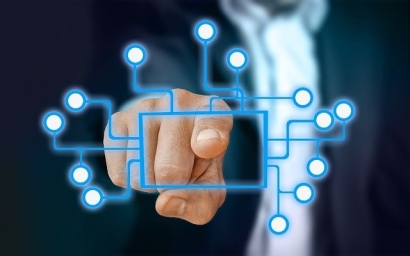
But the forward spend required to get to Net Zero by 2050 is staggeringly more; investment needs to triple from 2021 levels to $2.1 trillion during 2022-25, then to $4.2 between 2026 and 2030.
With huge amounts of financial capital being allocated towards achieving Net Zero, it means an equivalent growth in human capital is required.
When it comes to human capital there are only so many people with these skills, particularly in science, technology, engineering and math; creating an impending human resources crisis along the trajectory to Net Zero.
Even today, we see more competition for renewable energy talent with the balance of power shifting to suitably qualified and experienced candidates. As a collective, the renewable energy industry needs to innovate digitally to maximize what can be accomplished with its existing and future human capital base.
This will then reduce the potential impact of a Net Zero induced human capital crunch.
Solutions to an impending human resource crunch
There are currently many great examples of digital innovation comprising big data, artificial intelligence, and machine learning approaches. These innovations include energy aggregators performing balancing services, energy trading optimization, digital twins immediately highlighting deviations in performance for wind and solar farms, as well as more accurate weather predictions for better energy yield forecasts.
However, there is still a material gap in how the green energy industry frequently relies on conventional processes, organizational structures and decision-making. This has often created silos of knowledge with decision-making left in the hands of a few specialists.
Digitizing conventional processes reduces risk through the creation of a collaborative approach, enables a central platform of transparency of opportunities and risks, as well as an ability to structure the front-end prioritization funnel of a business more consistently. This in turn improves the focus of company time and speed to market. Harnessing digital tools can therefore provide material commercial benefits to an organization, accelerate Net Zero journeys, as well as help alleviate human resource scarcity.
Tailored digital platform vital to help meet Net Zero goals
An alternative solution to overcome the lack of available human resource would be to introduce the use of a digital platform specifically geared towards the needs of those working in the clean energy sector. This could offer at least four distinct advantages:
Speed to market: Net Zero projects can be screened faster and prioritized based on the reward-risk ratio they bring due to the automated setup designed in a digital modelling environment.
Optimization: The impact of reconfiguring existing, or future, single asset renewable generator sites by adding complementary renewable generator solutions with or without battery storage can be easily presented and understood by those with a range of skills and specialties, using this type of digital tool.
Characterization of real option value: Simplifying of life-time extension modelling, repowering, and performance upgrades for projects and portfolios coming to the end of their life cycle.
Risk and mitigation transparency: A central platform comprising project and portfolio risks can help an organization have a full enterprise overview, an action plan, clear ownership and full transparency.
Financial capital alone won’t be able to help the world reach Net Zero, so urgent digital action is needed to ensure those working in the clean energy sector can maximize the traction needed to get us there.
AUTHOR: Peter Lo, Director of Digital Strategy and Innovation for renewable energy consultancy ITPEnergised.

